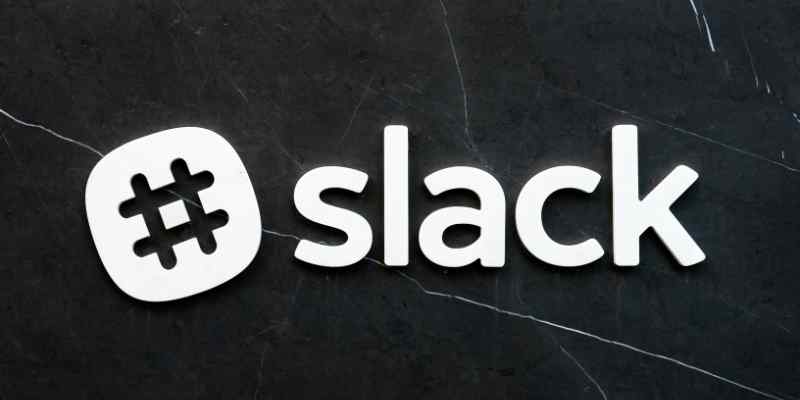In a world where 91% of B2B marketers use content marketing to reach their customers, there’s a palpable pressure.
Everyone knows content marketing is crucial. But the looming question persists: “What’s this going to cost me?”
The reality? There isn’t a one-size-fits-all answer.
Different businesses, different goals, and different audiences mean varying budgets.
It can feel overwhelming, right? What if you overspend and don’t see a return?
Or worse, underspend and miss opportunities?
Let’s demystify this together.
We’ll break down the costs, from content creation to distribution, so you can carve out a budget that fits like a tailored suit.
By the end, you’ll not only understand the real costs but also how to get the best bang for your buck. Because it’s not about spending more—it’s about spending right. Let’s dive in!
Understanding the Variables

Alright, before diving deep, let’s lay all our cards on the table.
Content marketing isn’t just scribbling blogs. It’s a vast universe.
Did you know that 72% of marketers believe videos have improved their conversion rates?
Or that there’s a surge in brands using podcasts as part of their strategy, with 32% of Americans tuning into podcasts monthly?
Factors Influencing Cost
Here’s where it gets a bit tricky. A tech startup aiming to break into Silicon Valley will have a different strategy (and budget) than a local bakery announcing a new sourdough. Think about it:
- Industry: Fashion brands might lean heavily on Instagram, requiring high-quality photos and videos, while a finance firm could invest more in informative blog posts or whitepapers.
- Goals: Launching a product? Raising brand awareness? Each goal comes with its price tag.
- Audience: Targeting Gen Z? Maybe TikTok’s your platform. Baby Boomers? Newsletters or Facebook might be your goldmine.
- Platform: Advertising on LinkedIn can be pricier than Facebook. Organically ranking on Google might need a more significant investment in long-form content and SEO.
- Frequency: Daily social media posts versus weekly? Each has a different cost implication.
So, when asking, “How much does content marketing cost?” you’re essentially asking, “How long is a piece of string?”
But don’t fret! We’ll unravel this string step by step. Stick with me.
Content Creation Costs

Let’s dissect the major player: content creation. Remember, quality over quantity. Always.
a. Written Content
Blogs, Articles, and Web Copy:
The written word is potent. But how much does it cost?
The average price can range from $50 to $500+ per piece, depending on expertise, industry, and research required.
For example, a simple 500-word lifestyle blog might be on the lower end, while a detailed technical article for a specialized industry can command higher rates.
E-books and White Papers:
These are the heavyweights. Think of them as assets, investments.
They can range from $500 to $5,000+, with factors like depth of research, design, and length driving the cost.
b. Visual Content
Graphics, Infographics, and Illustrations
People are visual creatures. 65% of us, to be precise, are visual learners.
Custom graphics can make your content pop, but they come with costs.
Simple graphics might set you back $50, while a detailed infographic can cost upwards of $500 to $1,000, given the design intricacies and data involved.
Photography: Stock vs. Custom
Stock photos? They can be wallet-friendly, with many sites offering images for free or at low costs.
But, they’re not exclusive.
On the flip side, custom photography ensures brand uniqueness.
A professional shoot, however, can range from $300 to $3,000 per day, depending on location, equipment, and talent involved.
In the content realm, you get what you pay for.
Your choices should reflect your brand’s voice, audience’s expectations, and your overarching strategy. Onward to more insights!
c. Video Content

Short-form vs. Long-form
Videos are powerful storytellers.
But there’s a divide. Short-form clips, perfect for TikTok or Instagram, might range from $300 to $5,000, considering factors like complexity and quality.
Long-form content, such as YouTube videos or webinars?
They’re a heftier investment, starting from $1,000 to $50,000 and up, especially when you factor in production, editing, and promotion.
Production Costs: DIY vs. Professional
The DIY route, with smartphones boasting impressive camera quality, is a cost-effective start.
Yet, for brand-specific or detailed videos, professional production – which includes equipment, crew, editing, and more – becomes essential.
Here, costs can start from $5,000 and soar depending on your vision.
d. Audio Content
Podcasts
The audio renaissance! With over 2 million podcast shows on platforms, it’s a medium on the rise. Initial setup?
Expect costs from $100 to $300 for decent recording equipment.
Production involves editing, which can be DIY or outsourced (ranging from $25 to $200+ per hour).
Distribution?
Platforms like Anchor or Libsyn can host for free to $50/month.
But remember, it’s not just about broadcasting; it’s about engaging, which might involve marketing and promotional costs.
Dabbling in video or audio isn’t just about the flash. It’s about connecting, informing, and engaging your audience in meaningful ways.
Choose wisely, invest smartly. Let’s keep the momentum going!
Distribution & Promotion Costs

Okay, you’ve crafted killer content. But what’s content without eyes on it? Let’s discuss getting it out there and maximizing its reach.
a. Social Media
Organic Promotion vs. Paid Advertising
You can post organically, which costs nada. But the organic reach, especially on platforms like Facebook, has dwindled over the years.
Paid advertising, on the other hand, amplifies your reach.
Ad spends vary widely: a day’s campaign can start from $5 to thousands.
The key is targeting: reaching the right audience without burning through your budget.
Influencer Partnerships
Want to tap into established audiences? Influencers. But this route has its price tags. Nano-influencers might only ask for free products, while top-tier influencers can charge from $1,000 to $100,000+ per post. It’s all about finding the right fit for your brand.
b. Email Marketing
Tools and Software
The backbone of your email campaigns. Platforms like MailChimp or ConvertKit offer tiers based on subscribers: free to $1,000/month. These tools provide automation, segmentation, and analytics — vital for effective email marketing.
Design and Content Creation for Newsletters
It’s not just about blasting messages; it’s about delivering value. Basic templates? Part of your email platform. Custom designs or specialized content? That can range from $50 to $2,000 depending on complexity and professionalism.
Distribution and promotion are as crucial as content creation. It’s like baking the world’s best cake but forgetting to send out party invites. The world deserves your content, and with the right strategy, they’ll get it. Let’s push on!
SEO and SEM

Search Engine Optimization and Search Engine Marketing are the two segments that accounts for major cost:
· Tools, Plugins, and Professionals
Search visibility is crucial. For SEO, tools like Yoast (for WordPress) might be free or go up to $89/year for premium versions.
Advanced tools like SEMrush or Ahrefs can range from $99 to $399/month.
Then there’s the cost of professionals.
A freelance SEO expert can charge anywhere from $50 to $200/hour, while agencies have packages starting from $1,000/month.
· Paid Advertising: Google Ads, Bing Ads
SEM is about buying visibility. Platforms like Google Ads operate on a bidding system.
The cost-per-click (CPC) can range from $1 to $50, depending on the competitiveness of keywords.
Bing Ads, often overlooked, can offer lower CPCs, but also might have less traffic.
Affiliate and Partnership Marketing
Costs Associated with Affiliate Programs

Platforms like ShareASale or CJ Affiliate have setup fees, typically starting from $500, plus ongoing fees based on activity.
You’ll also pay commissions on sales or leads, which can range from 5% to 50% or more, depending on the product or industry.
Sponsored Content:
This is when you pay to have your content featured on a platform or site.
Costs are incredibly variable.
A guest post on a niche blog might be $50, while a sponsored post on a major media site can be thousands. Always weigh the potential ROI!
Remember, while all these channels offer potential, it’s crucial to find where your audience hangs out and invest accordingly.
Pouring funds into every channel without strategy is a quick way to see diminishing returns. Next up, we’ll delve even deeper. Stay with me!
Tools & Platform Costs

Navigating the digital landscape? You’ll need the right tools in your arsenal. Let’s break down the costs of some essential platforms and tools.
a. Content Management Systems (CMS)
- WordPress
The juggernaut, powering 40% of the web. It’s open-source, meaning it’s free. But, factor in premium themes ($20-$200), plugins (free to $100+), and hosting ($3-$50/month).
- Wix
A user-friendly, drag-and-drop builder. Plans range from $14 to $49/month. Keep in mind, the lower tiers come with Wix ads on your site.
- Squarespace
Known for sleek designs. Pricing spans from $12 to $40/month, billed annually. The cost includes hosting and some built-in analytics.
b. Analytics and Performance Tracking
- Free Tools:
Google Analytics tops the list. It’s comprehensive and costs nothing. But there’s a learning curve.
- Premium Solutions:
For deeper insights, tools like Moz Pro or SEMrush come in handy. Prices vary, from $99 to $400/month, based on functionalities.
C. Content Planning & Collaboration Tools

- Trello
Visualize your content calendar. It’s free for basic usage. Business Class, with added features, is $10/user/month.
- Asana
Project management made easy. There’s a free basic version. Premium plans start at $13.49/user/month.
- Slack
Communication central for teams. The free version is robust. Paid versions, offering more integrations and history, range from $6.67 to $12.50/user/month.
Investing in the right tools isn’t just about streamlining processes.
It’s about setting up your content strategy for success from the get-go.
And as we pivot to the next segment, keep in mind: the best tool fits your needs, not the most expensive one. Onwards!
Hidden Costs & Overlooked Factors

The path of content marketing has a few hidden bumps.
Let’s shine a light on some overlooked expenses and elements that might just catch you off guard.
Time as an Investment
- Strategy: Crafting a blueprint isn’t instantaneous. From understanding your audience to pinpointing the perfect content mix, planning can swallow hours, if not days.
- Creation: Ah, this isn’t just about penning down a 500-word blog. It’s research, drafting, editing, graphics, and more. A single piece can range from a couple of hours to a week or more.
- Analysis: The post-publish phase is as crucial. Studying metrics, understanding engagement, and iterating can consume several hours monthly.
Training and Professional Development
Never underestimate the power of a well-trained team.
Whether it’s mastering the latest SEO tricks, understanding a new social media algorithm, or getting to grips with a fresh CMS update, training sessions and workshops are investments.
They can range from $50 for a webinar to $2,000 for intensive courses.
Unexpected Expenses:
- Website Crashes: Your site going down isn’t just an operational hiccup. It’s lost visibility and potential lost customers. Immediate fixes might cost from $100 to $500 or more, depending on the issue.
- Rebranding: Maybe your current branding isn’t resonating. Or perhaps it’s just time for a fresh coat of paint. This isn’t just about a new logo. It’s site redesign, content overhaul, new marketing materials, and more. Costs can start at a few hundred and rocket into the thousands.
- Miscellaneous: Ever thought about those stock photo licenses? Or maybe that plugin that suddenly went premium? These small add-ons can add up.
In the content landscape, not every cost is glaringly evident from the start.
But with a sharp eye and proactive planning, you can be prepared.
As we wrap this up, remember: every investment, visible or hidden, propels you closer to your content goals.
Let’s navigate these challenges together!
Making the Most of Your Budget

So, you’ve eyed those figures, felt a pinch in the pocket, maybe even gasped a little. Let’s pivot. Instead of asking, “How much does it cost?”, let’s explore, “How can I make every dollar count?”
Tips for Efficient Budgeting:
- Prioritize: Not every platform or format needs your immediate attention. Start with where your audience hangs out the most.
- Repurpose: That long-form blog can morph into infographics, social media snippets, or even a podcast episode. One content piece, multiple forms.
- Test and Iterate: Instead of a massive ad spend, start small. Test, understand, then double down on what works.
The Importance of ROI Tracking and Regular Analysis
- Metrics Matter: A post got 100 likes. Great! But did it drive traffic? Lead to conversions? Every piece should have a goal and every goal a measure. Tools like Google Analytics or UTM parameters can help.
- Regular Check-ins: Quarterly content reviews aren’t just about patting backs or pinpointing gaps. They’re about understanding ROI and adjusting sails.
Balancing Between In-House and Outsourced Content

- In-House Pros: Your team gets your brand voice. They’re right there, aligned with the company mission. This means consistent voice and quicker content turnaround.
- In-House Cons: A limited number of in-house talents might mean a limited range of content styles or formats.
- Outsourced Pros: Access to a vast pool of talent. Need a tech-savvy writer today and a fashion-forward one tomorrow? Freelancers have got you covered.
- Outsourced Cons: It might take a bit to find the perfect fit. Plus, ensuring brand voice consistency can be challenging.
The Blend: Maybe your core content remains in-house, while specialized pieces get outsourced. Find a balance that suits your brand and budget.
Every penny you pour into content marketing is an investment.
And like all investments, it’s not about how much you spend, but how wisely you spend.
Let’s get strategic, deliberate, and make those content dollars work overtime! Onward and upward!
Conclusion
In the realm of content marketing, it’s not just about spending; it’s about aligning every dollar with your business aspirations.
As the digital tapestry evolves, stay nimble, adapt, and remember: your strategy and budget should walk hand-in-hand.
Experienced the budgeting dance?
Faced a challenge or had an “aha” moment? Share your insights below.
And if you’re hungry for more on crafting effective content strategies, dive into our related resources.









